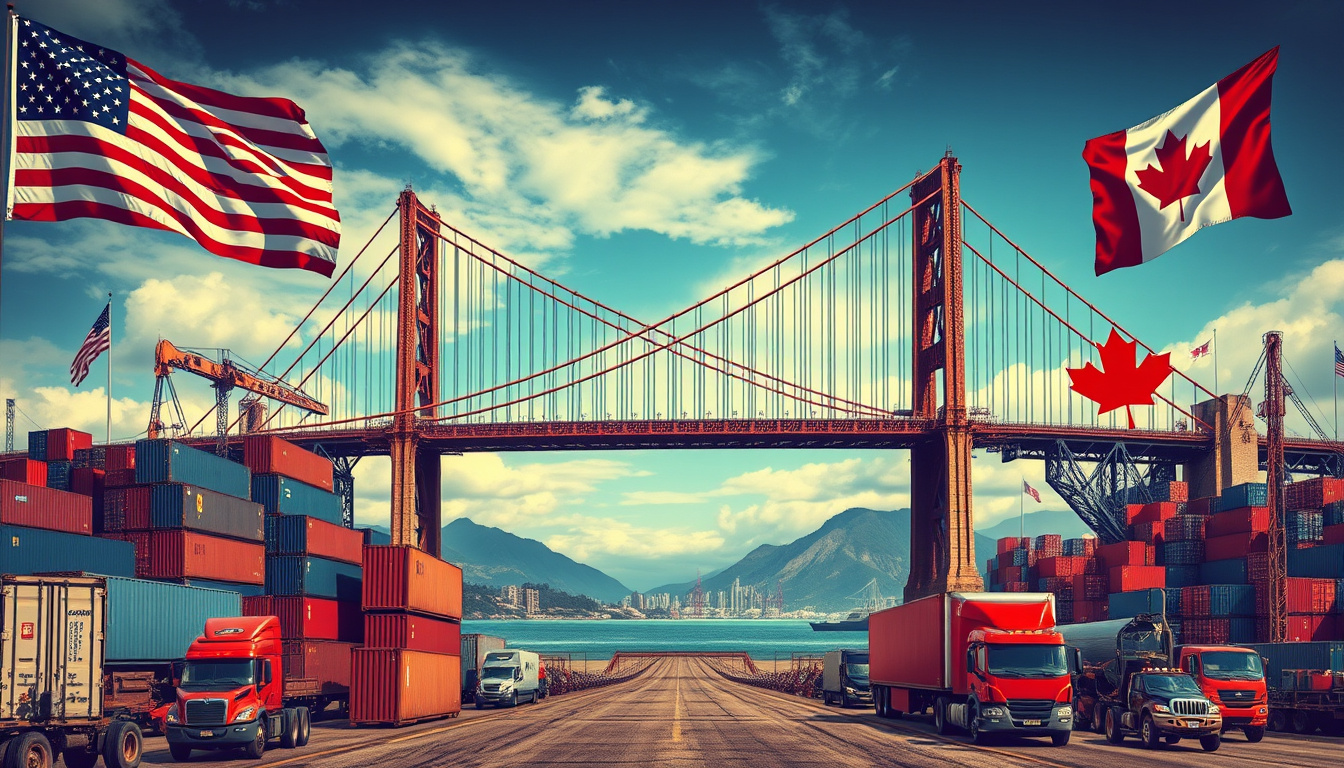The Gordie Howe International Bridge is set to become a landmark infrastructure project, symbolizing the strong trade relationship between Canada and the United States. With a staggering $6.4 billion price tag, it aims to alleviate traffic congestion and create a seamless trade route connecting Highway 401 in Ontario with I-75 in Michigan. However, as construction progresses, the looming shadow of political tensions stemming from trade disputes raises crucial questions about the bridge’s potential impact on North American trade. As we explore the implications of these troubled relations and the future prospects of U.S.-Canada trade through the bridge, it’s essential to grasp how external factors may reshape this ambitious project.

Key Takeaways
- The Gordie Howe International Bridge is a crucial $6.4 billion project aimed at enhancing U.S.-Canada trade.
- Political tensions and trade wars are threatening to undermine the bridge’s potential benefits and expected traffic.
- Despite delays, the project team remains committed to completing the bridge, emphasizing its importance for future trade relations.
Impact of Political Tensions on Investment
The Gordie Howe International Bridge, a monumental $6.4 billion infrastructure project designed to connect Canada and the U.S. across the Detroit River, stands at a critical crossroads due to heightened political tensions and a turbulent trade environment. Officially becoming North America’s longest cable-stayed bridge in 2024, its primary goal is to reduce congestion at existing crossings while boosting trade routes between Highway 401 in Ontario and I-75 in Michigan. However, this ambitious project is facing significant challenges as strained cross-border relations have led to a notable decline in trade activities at nearby crossings, notably the Ambassador Bridge, and a drop in tourism traffic through the Detroit-Windsor Tunnel. Despite these adversities, the project team remains committed to its vision, as indicated by consistent progress in construction that reflects ongoing investment and optimism in U.S.-Canada relations. Although construction is set to conclude later this year, the bridge’s opening has been postponed until September 2025, extending its timeline by ten months. When it finally opens, there are hopes that it will evolve into Canada’s largest port of entry. Nonetheless, its capacity to effectively manage traffic flow hinges significantly on the dynamic political interactions and economic policies governing U.S.-Canada relations.
Future Prospects for U.S.-Canada Trade Through the Bridge
The Gordie Howe International Bridge is not merely a structure; it represents a vital link for trade and travel between the United States and Canada. As the bridge approaches its expected completion in September 2025, evaluators and stakeholders are focused on its potential impact on regional economies. Trade analysts predict that the bridge could play a pivotal role in restoring and potentially accelerating trade activities post-completion, especially if diplomatic relationships improve. Enhancements in infrastructure often spur economic growth, and proponents believe that easing current restrictions on imports and exports could lead to revitalized commerce. Furthermore, the bridge supports sustainability goals by providing a modern alternative for freight transport across the border while encouraging tourism, assuming that conditions allow for an uptick in visitor numbers. However, its success will be closely tied to external factors such as bilateral negotiations, tariffs, and economic policies, underlining the intricate relationship between infrastructure and international relations.





